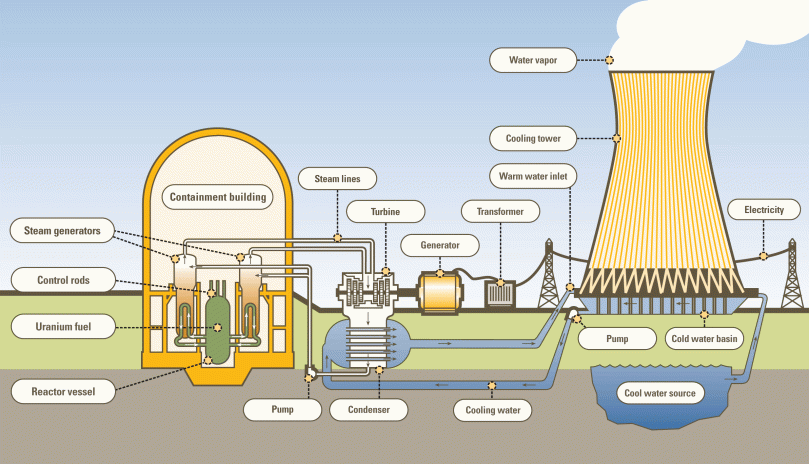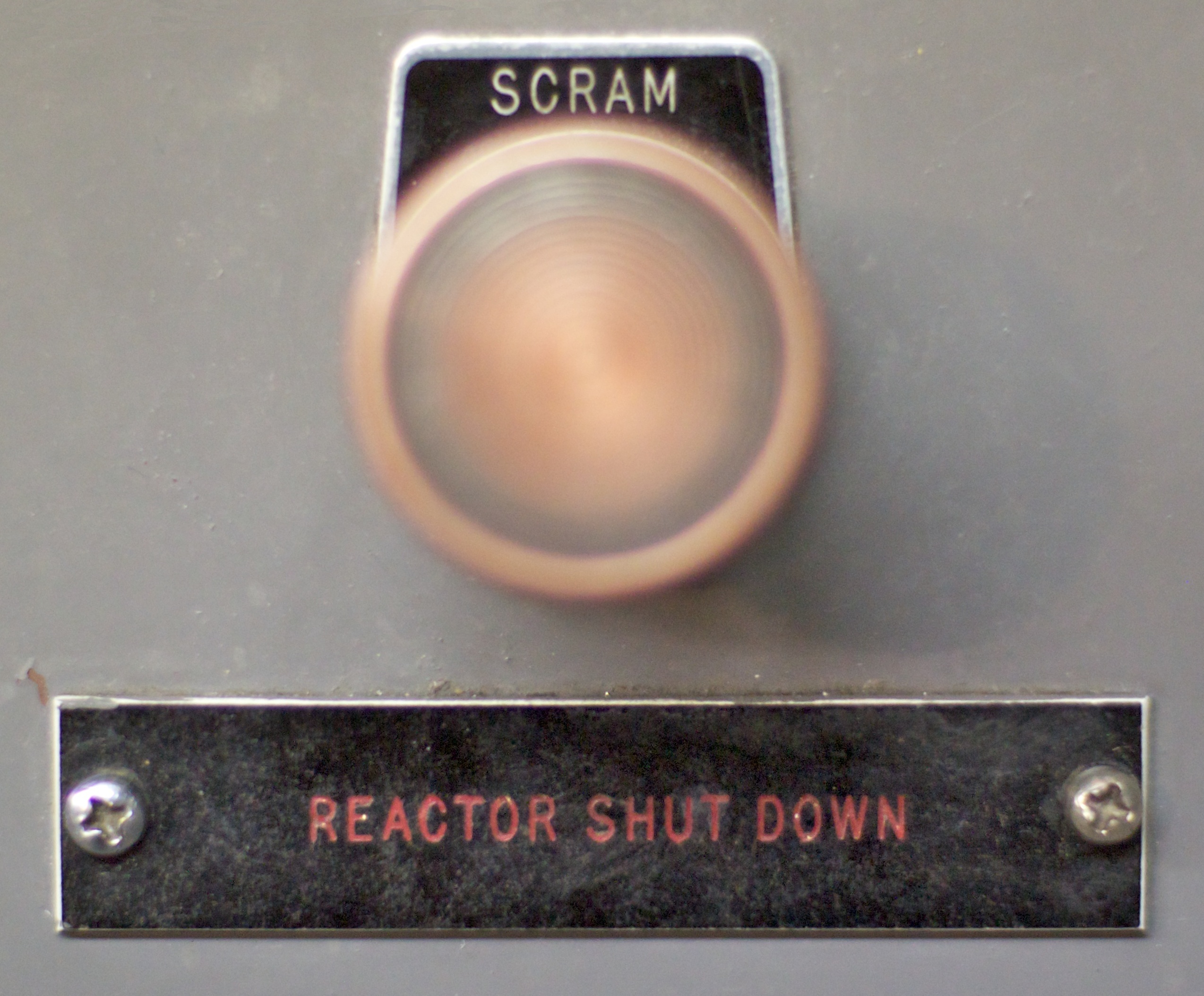Today, there is a constant need for energy and nuclear fission is one of the most efficient sources of energy. Yet, in public’s eyes, nuclear power is considered to be extremely dangerous and unsafe. Accidents in the past years contribute to this perception. However in order to fully understand the real danger in nuclear power, we have to take a close look at this accidents. Before we do that, I want to briefly mention how nuclear plants functions and the basics of nuclear power.

How Nuclear Plants Work
Nuclear plants generate energy by nuclear fission which is a reaction where massive elements (usually uranium) split into smaller nuclei with the additional release of free neutrons and protons in the form of radiation. Even one reaction produces a large amount of energy. This energy is converted to heat, and then electricity is generated. However nuclear reactions are chain reaction with reaction rates growing exponentially. Although it is ideal for nuclear bombs, reactions in the nuclear reactors must be controlled in order to prevent a meltdown. There are various mechanisms that helps with controlling the chain reactions. The most important one is the control rods in the reactors. These rods absorb neutrons and prevent them from splitting further uranium atoms. They can be inserted and removed from the core which allow operators to control the neutron flux.
 Another mechanism is called SCRAM, which stands for safety control rod axe man. After initiation of this procedure, all of the control rods are inserted to the reactor within four seconds, and the nuclear fission come to an immediate end. However, this doesn’t mean that SCRAM is the ultimate solution to prevent a meltdown. In fact, in all of the accidents that will be examined in the next posts, SCRAM was performed and the meltdown occurred after that. The reason for that is even though the neutrons produced by direct fission is immediately slowed; slower neutrons from the radioactive decay of the products limit the shutdown. Due to this decay, about 7% of the initial power of the reactor remains and then decreases. This heat is called the decay heat, and it is the main reason of most meltdowns. The ultimate shutdown state is the cold shutdown, which means even if the water pressure is readjusted to atmospheric pressure the water doesn’t boil.
Another mechanism is called SCRAM, which stands for safety control rod axe man. After initiation of this procedure, all of the control rods are inserted to the reactor within four seconds, and the nuclear fission come to an immediate end. However, this doesn’t mean that SCRAM is the ultimate solution to prevent a meltdown. In fact, in all of the accidents that will be examined in the next posts, SCRAM was performed and the meltdown occurred after that. The reason for that is even though the neutrons produced by direct fission is immediately slowed; slower neutrons from the radioactive decay of the products limit the shutdown. Due to this decay, about 7% of the initial power of the reactor remains and then decreases. This heat is called the decay heat, and it is the main reason of most meltdowns. The ultimate shutdown state is the cold shutdown, which means even if the water pressure is readjusted to atmospheric pressure the water doesn’t boil.
There are various types of nuclear plants. The most commonly used one is Pressurized Water Reactor which constitutes a large majority of all Western power plants. It is a light water reactor and there are other types of it as well, such as Boiling Water Reactors and Supercritical Water Reactors. These reactors use water both as coolant and neutron moderators. It means water cools the system and slows down the fast neutrinos. Another type of reactors, RBMK reactors, also use water as a coolant and but use graphite instead as a moderator. I’ll describe the design features of these reactors in more details in the following posts.
 INES Scale
INES Scale
So far, there have been ninety-nine nuclear power related accidents worldwide. The severity of these accidents is classified according to a logarithmic scale called INES (International Nuclear and Radiological Event Scale), which ranges from 0 (deviation) to 7 (major accident). Of these 99 nuclear power related accidents, there are three major accidents which take place in a nuclear power plant: Three Mile Island accident, Chernobyl disaster and Fukushima Daiichi accident. These accidents have an INES level of 5(accident with wider consequences), 7 and 7, respectively. All three accidents have cost great financial damage, however apart from the Chernobyl disaster there haven’t been any major casualties. By looking at these accidents, we’ll also look at three problems of nuclear plants which are oxidation of zirconium, reactor poisoning and spent fuel pools, respectively.
[…] Nuclear Power Safety and Accidents Pt. 1: Nuclear Plants and the Essentials […]
LikeLike
Three Mile Island and Fukushima were both “meltdowns” or to be more accurate lack of cooling accidents, the core melting at Chernobyl occured after the reactivity accident and is not the important part of the accident. If no melting of the fuel had occured at Chernobyl then there would still have been a large release of radioactivity as the explosion lifted the lid off the reactor, made a hole in the roof and scattered fuel particles out of the plant.
Also it is important to understand that the chemistry of the accident has a very strong effect of the way the accident progresses and on the dose given to the general public + plant workers. You might want to read a review article I wrote on the subject of the chemistry of a serious accident which is at Cogent Chemistry http://cogentoa.tandfonline.com/doi/full/10.1080/23312009.2015.1049111
I would be interested to know why and how you selected the accidents you write about, what about the Windscale fire, SL1 and A1. These three events are older but very interesting ones.
LikeLiked by 1 person
Thanks a lot for reading and commenting! I’ll definitely check that article out and look at your blog. As for why I chose those three accidents, there are a few reasons. As I said in the first post, I chose this topic because there are two nuclear power plants under construction in Turkey right now, and I wanted to look at accidents that happened specifically at power plants. SL1 and Windscale for example are army related facilities. Another reason is familiarity and popularity; Fukushima is very recent and Chernobyl is extremely well-done. I haven’t heard of the ones you mentioned until I started doing this project, but if I can find the time, I would love to read more about them and maybe do additional posts. It would be great if you could suggest me some good reading materials for starting!
LikeLike